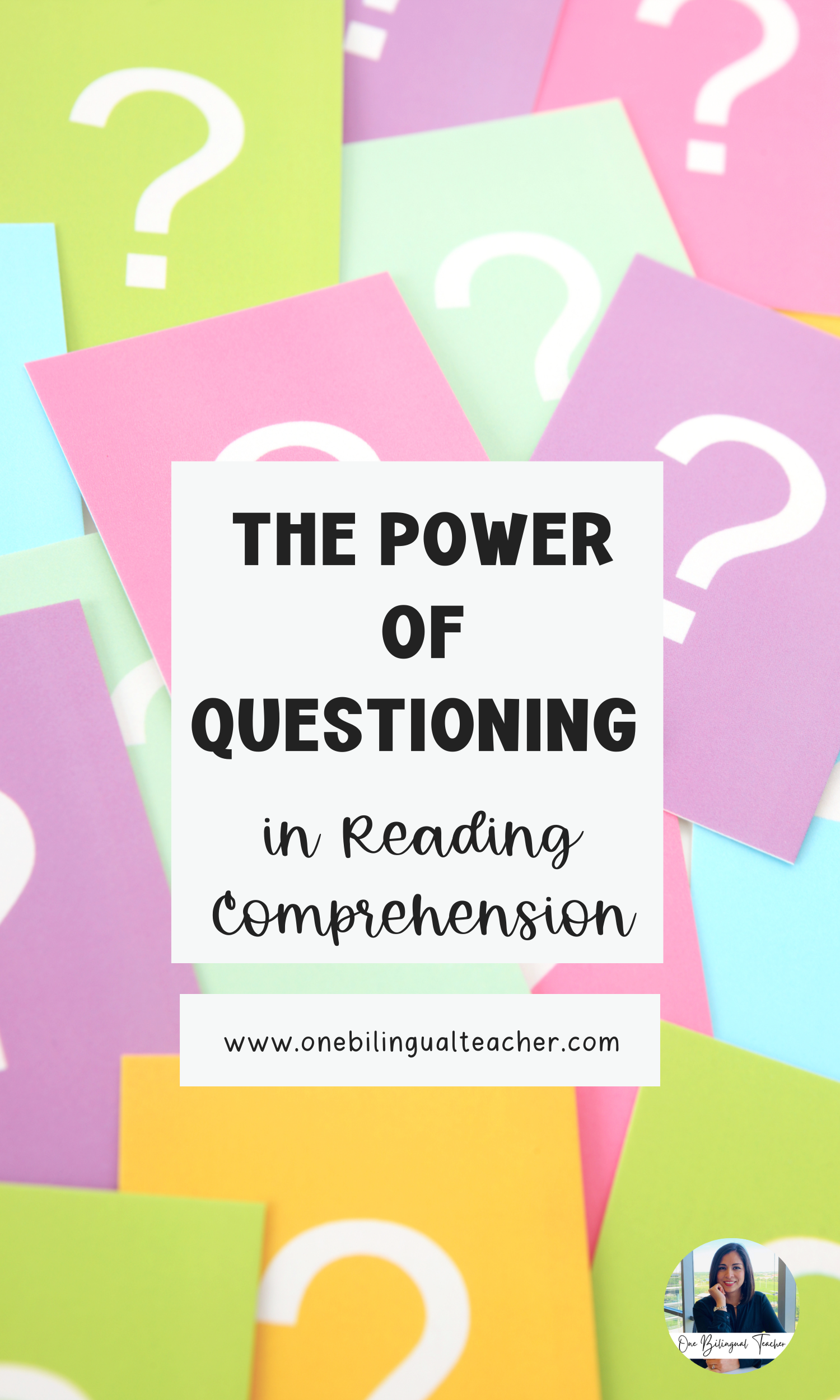Reading Comprehension Strategies: The Power of Questioning
Is comprehension taking a toll in your class? Here’s a teaching strategy that can make a world of difference in your students' reading comprehension: questioning while reading. In this blog post, we'll explore why asking questions during reading is such a game-changer, break down the types of questions, and provide you with examples to promote deeper comprehension. Let's get started!

Why Questioning Matters
You might be wondering, "Why is questioning during reading so important?" Well, it's all about enhancing comprehension and critical thinking. When students actively ask questions as they read, it forces them to engage with the text on a deeper level. It's like turning on a spotlight in a dimly lit room; suddenly, everything becomes clearer.
Types of Questions
Before we jump into examples, let's understand the three main types of questions students can ask while reading to enhance their comprehension.
- Literal Questions: These questions focus on facts and details found explicitly in the text. They're the "who," "what," "when," and "where" questions.
- Inferential Questions: These questions require students to read between the lines. They're all about figuring out the "why" and "how" behind the text.
- Evaluative Questions: These questions prompt students to assess and analyze the text. They're about forming opinions, making judgments, and examining the author's intent and message.
Examples of Literal Questions
Literal questions are a great starting point, especially for ESL students. They help build a foundation of understanding. Here are a few examples:
- "Who is the main character in this story?"
- "What is the setting of the story?"
- "When did the events in the story take place?"
- "Where does the story primarily occur?"
These questions are like building blocks. They help students grasp the basics of the text.You can find Literal Comprehension Question activities for your ESL students in my TPT Store.
Examples of Inferential Questions
Now, let's kick it up a notch with inferential questions. These comprehension questions encourage students to read between the lines and think more critically. Here are some examples:
- "Why do you think the main character made that decision?"
- "How do you think the character felt when that happened?"
- "What can you infer about the character's personality from their actions?"
- "Why do you think the author chose to describe the setting in that way?"
Inferential questions require students to analyze and make educated guesses based on the information presented in the text. They're like a mental workout for their brains. You can find free inferential questions here.
Examples of Evaluative Questions
Lastly, evaluative questions take students to the highest level of comprehension. These questions encourage them to form opinions and assess the text critically. Here are some examples:
- "Do you agree with the character's decision? Why or why not?"
- "How effective was the author in conveying the story's message?"
- "What would you have done differently if you were the main character?"
- "What do you think the author was trying to teach us through this story?"
Evaluative questions push students to think deeply and consider the text's broader implications. They're like the icing on the cake of comprehension.
The Questioning Process
Now that we've explored the types of questions, let's talk about how to implement questioning in the classroom effectively. The questioning process involves three key phases:
- Pre-Reading Questions: Before students even crack open the book, set the stage with questions related to the topic or themes. This helps activate their prior knowledge and piques their interest.
- During-Reading Questions: Encourage students to ask questions as they read. These questions can be literal, inferential, or evaluative, depending on the text and the students' comprehension level. Encourage them to jot down their questions or discuss them in pairs or groups.
- Post-Reading Questions for Comprehension: After completing the reading, engage the class in a discussion about the text, addressing the questions that arose during reading. This post-reading reflection helps solidify their understanding and promotes critical thinking.
Promoting Questioning in the Classroom to Enhance Comprehension
Creating an environment that encourages questioning
Here are some strategies to help:
- Open Discussions: Encourage students to ask questions freely, without fear of judgment. Create a safe space where curiosity is celebrated.
- Question Stems: Provide question starters to scaffold the questioning process. These can be displayed in the classroom or provided as handouts.
- Modeling: Demonstrate how to ask questions and think critically about texts. You can do this through think-alouds, where you verbalize your thought process while reading.
- Peer Discussions: Promote peer-to-peer questioning and discussion. Pair students up and have them take turns asking and answering questions about the text. This collaborative approach can be especially beneficial for ESL students, as they can learn from each other's perspectives and language usage.
Adapting for ESL Learners
When teaching questioning while reading to ESL students, it's important to make some adaptations to support their language development:
- Vocabulary Support: Since ESL students may encounter unfamiliar words, provide vocabulary assistance to help them form questions. This can include pre-teaching key vocabulary or providing glossaries.
- Scaffolding: Gradually release responsibility for questioning as students become more proficient. Start with simpler texts and questions and gradually introduce more complex materials.
In a Nutshell
In a world filled with information, teaching ESL students how to ask questions while reading is like giving them a powerful tool for comprehension and critical thinking. By incorporating literal, inferential, and evaluative questions into your lessons and creating an inquiry-friendly classroom, you'll empower your students to become not just readers, but thinkers.

